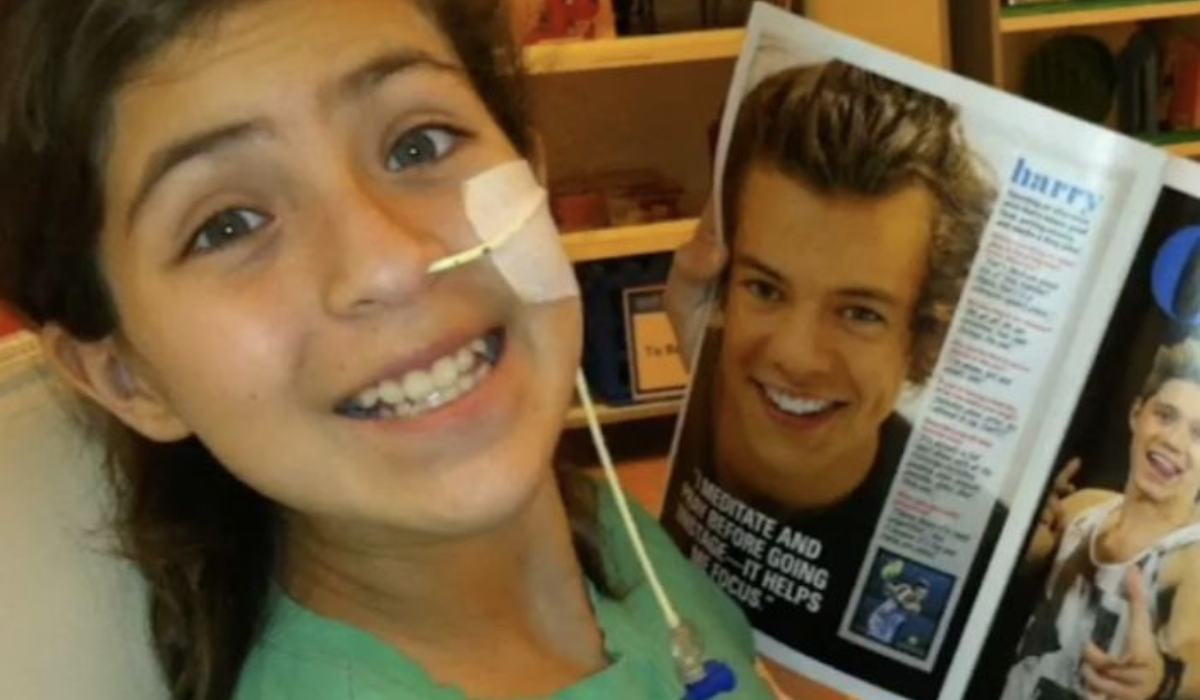Pediatric Pancreatitis

While pancreatitis most commonly affects adults, children can suffer from the disease too. Each year, 12 in 100,000 children suffer from pancreatitis, and 2 in 100,000 are diagnosed with chronic pancreatitis. If your child has been diagnosed with pancreatitis, you may feel confused, emotional, and full of questions. We’re here to offer you answers and resources.
Pancreatitis in Children
Pediatric pancreatitis is a condition that occurs in children and young adults, specifically those 21 years old or younger. Like in adults, pancreatitis in children involves inflammation of the pancreas. The pancreas is an important organ located in the upper left quarter of the abdomen, right behind the stomach. It’s one of the organs that are responsible for helping break down food as we eat and regulating blood sugar levels. When the pancreas becomes inflamed, it often causes extreme abdominal pain, nausea, and vomiting. When the pancreas becomes chronically inflamed (chronic pancreatitis), it may cause permanent damage and lead to other conditions like diabetes or exocrine pancreatic insufficiency.

Diana and Diego, siblings affected by pediatric pancreatitis. Read their stories about how childhood pancreatitis affects them.
Types of Pancreatitis in Children
The type of pancreatitis your child may have is based on the number of attacks or the inflammation of the pancreas.
There are three main types of pancreatitis that can occur in children:
- Acute Pancreatitis. Acute pancreatitis is characterized by only one attack of pancreatitis. Those with acute pancreatitis should start to feel better within about a week, and will most likely have no further problems. About 15-35% of children who experience acute pancreatitis will progress to recurrent acute pancreatitis.
- Recurrent Acute Pancreatitis. Recurrent acute pancreatitis (RAP) is characterized by at least 2 episodes of pancreatitis, with no ongoing pain between attacks for one month. Recurring pancreatitis attacks can lead to chronic pancreatitis, as repeated inflammation may cause permanent damage.
- Chronic Pancreatitis. Chronic pancreatitis (CP) happens when there is ongoing inflammation of the pancreas. Some people develop chronic pancreatitis without having acute pancreatitis attacks first. CP is characterized by structural damage to the pancreas. This damage causes problems with digestion and can lead to complications, such as exocrine pancreatic insufficiency and diabetes.
Watch our webinar on Pediatric Pancreatitis.
Causes of Pancreatitis in Children
Pancreatitis in children is often a result of genetic abnormalities or biliary disorders. Pinpointing the cause is a process you and your doctor should engage in together. You may need to advocate for a pancreatitis-specific genetic test.
Common causes of pancreatitis in children include:
- Biliary Disorders or Obstructions (gallstones, other blockages)
- Genetics
- Certain Medications (such as valproic acid or prednisone)
- Systemic Illness (such as kidney failure)
- Trauma to the abdomen
- Viral Illness (such as Coxsackie virus or viral hepatitis)
- Metabolic Conditions (hyperlipidemia or hypercalcemia)
- Auto-Immune Conditions
- Endoscopic retrograde cholangiopancreatography (ERCP)
- Idiopathic (unknown cause)
Signs of Pancreatitis in Children
Depending on your child’s age or ability to communicate, it may be difficult to know if they are experiencing symptoms of pancreatitis. While sudden stomach pain is the most common symptom, other signs can help you tell if there may be trouble with your child’s pancreas.
Common signs of pancreatitis in children include:
- Abdominal Pain
- Back Pain
- Pain after eating
- Avoiding certain foods
- Nausea and vomiting
- Diarrhea
- Loose, oily stools
- Fever
- Unexplained weight loss
Learn more about the causes and symptoms of pancreatitis.
Diagnosing Pancreatitis in Children
To diagnose pancreatitis in children, it is best to go to a pancreas specialist, which is a type of gastroenterologist (GI). They should look at your child’s symptoms, perform laboratory tests and/or imaging, and ask for a thorough family history. These diagnostic tools will help your child’s doctor determine if there is inflammation in the pancreas, see if there’s a reason why their pancreas may be inflamed, and rule out any other possible conditions.
If your child has had a single episode of acute pancreatitis, you should see a pancreas specialist and ask them to order a pancreatitis-specific genetic test. Many healthcare providers are not knowledgeable about pancreatitis. Many providers do not conduct tests or monitoring after a child has a single acute pancreatitis attack in the hopes that there will not be a recurrence; however, 15-35% of children have a second attack.
Learn more about diagnosing pancreatitis.
After A Diagnosis
After a diagnosis of pediatric pancreatitis, whether acute or chronic, you may be wondering what’s next. While there is no disease-altering treatment, Mission: Cure is working on developing effective therapies. There are therapies to manage pancreatitis symptoms, including pain, nausea, exocrine pancreatic insufficiency (EPI), and vitamin deficiencies.
What To Expect
Recurrent acute and chronic pancreatitis places a significant burden on children and their caregivers. While each child is different, parents of those diagnosed with recurrent pancreatitis may expect their child to have:
- 2 to 4.5 emergency room visits per year
- 2 to 4 hospitalizations per year
- 0 to 2 missed days of school per month
- Medical therapies, ERCPs, and surgeries
- Recurring pain or constant pain
- Possible use of narcotics
- Disruption of daily activities
Listen to the Williams Family as they share their personal experience of caring for their son, who has pediatric pancreatitis.
Managing Pediatric Pancreatitis
With the right strategies in place, you can support your child’s well-being, helping them navigate daily life and manage symptoms effectively while living with pediatric pancreatitis.
Nutrition
Recurrent pancreatitis in children can often lead to nutritional issues, such as malnutrition. It’s important to make sure your child is getting the nutrition they need and address any problems that may come up as a result of their condition.
Nutritional issues in children with pancreatitis include:
- Poor appetite and food intake
- Malabsorption of dietary fat, fat-soluble vitamins, and essential fatty acids
- Impaired childhood and adolescent growth, including weight, height, muscle mass, and fat stores
In order to monitor and maintain the nutritional wellness of your child with pancreatitis, experts recommend:
- A regular, healthy diet (as tolerated). Encourage small and frequent meals that include a healthy balance of fat, proteins, and carbohydrates.
- Monitoring eating habits. Monitoring your child’s eating habits and response to certain foods and keeping track of daily intake. It helps identify symptoms that may trigger pain episodes and help advocate for your child during appointments.
- Periodic testing. Periodic testing for vitamin and mineral deficiencies to proactively prevent malnutrition and ensure your child is meeting growth milestones. Recommended tests for pediatric chronic pancreatitis include growth parameters, bone density tests, pancreatic exocrine insufficiency, and tests to check for vitamins A, D. E, and K.
Watch our webinar on nutrition for children with pancreatitis.
Pain Management
Pain is a complex symptom of pancreatitis, and there are many factors involved. Early and effective pain management in pediatric pancreatitis is important and may have long-lasting benefits. How pain is managed should be specifically tailored to your child. It’s best to start with non-narcotics, and there are several medication approaches that your child’s doctor may recommend.
Common pain medications for children with pancreatitis include:
- Acetaminophen (Tylenol)
- Ibuprofen/NSAIDS
- Narcotics PRN (try to combine with non-opioids)
- Gabapentin
- Pregabalin
- Antidepressants
Non-medication pain management techniques for children with pancreatitis include:
- Cognitive Behavioral Therapy
- Massage
- Yoga
- Meditation
- Transcutaneous Electrical Nerve Stimulation (TENS)
- Acupuncture
Download our pain management for pediatric pancreatitis patients toolkit.
Self-Care
Self-care is essential for all pancreatitis patients, and it’s important to give your child the tools to succeed while living with the condition.
To help you and your child practice self-care for pancreatitis, consider:
- Explaining to them what their condition is and how it affects their body
- Helping your child recognize foods and drinks that may trigger symptoms (while maintaining a regular diet as much as possible)
- Explaining the importance of eating well-balanced meals and maintaining a healthy weight
- Avoiding medications that can trigger pancreatitis, such as some seizure medications, antibiotics, and cancer chemotherapy agents
- Teaching your child about the risks of alcohol and tobacco, which can cause their condition to worsen
Mental Health
People living with pancreatitis are at an increased risk of developing mental health disorders, such as anxiety or depression. For children with frequent hospital stays and medical procedures, they’re also at risk of developing a type of post-traumatic stress disorder (PTSD) called pediatric medical traumatic stress (PMTS). As a result, in addition to supporting your child’s physical health, it’s just as important to support your child’s mental health too.
To support your child’s mental health, it’s recommended to:
- Be honest about their pancreatitis and any procedures they may have
- Never trick or lie to your child about a medical procedure or hospital stay
- Maintain schedules and routines as much as possible
- Find fun alternatives to activities they can no longer participate in
- Consider age-appropriate therapy
- Seek therapy/psychological care for yourself as a parent
Resources for Pediatric Pancreatitis
In addition to our pediatric pancreatitis toolkits and webinars, there are some resources that can help you and your child while navigating childhood pancreatitis:
- Pediatric Emergency Information Card. The Pediatric Patient Passport is a tool that your child’s primary gastroenterologist can complete to easily share information with clinicians who are not familiar with your child’s medical history. This can be an important resource for when you are traveling or have to go to an emergency room.
- Childhood Pancreatitis Support Facebook Group. In this Facebook group, families can connect with others who understand the unique challenges of childhood pancreatitis, and find tips for managing symptoms and coping with the emotional impact of the condition.
- Camp Hope. Camp Hope offers a unique and free overnight summer camp experience for children dealing with pediatric pancreatitis or those who have undergone TPIAT surgery.
- Creative Healing for Youth in Pain. CHYP is a nonprofit that offers creative healing experiences and support to youth in chronic pain and their caregivers, including Zoom meetings, workshops, and summer camps.
Frequently Asked Questions
Each year, about 12 in 100,000 children suffer from pancreatitis. Of those children, 15-35% will progress to recurrent acute pancreatitis (RAP). Recurring pancreatitis attacks can lead to chronic pancreatitis, as the repeated inflammation may cause permanent damage. 6 in 100,000 children suffer from chronic pancreatitis yearly.
There is no recommended diet for children with pediatric pancreatitis. Children should eat a regular, healthy diet as much as tolerated. Encourage small and frequent meals that include a healthy balance of fat, proteins, and carbohydrates.
Death from acute pancreatitis in children is very low; however, it can occasionally happen. These deaths typically occur when the child has a significant illness that causes damage to multiple organs.
Key Takeaways
- Pediatric pancreatitis is a condition that occurs in children that involves inflammation of the pancreas.
- The three main types of pancreatitis that can occur in children are acute, recurrent acute, and chronic.
- The causes of pediatric pancreatitis can be very broad, and a healthcare professional should be consulted when searching for a cause.
- Common symptoms of pancreatitis in children include abdominal and back pain, digestive issues, upset stomach, fever, and unexplained weight loss.
- Recurrent acute and chronic pancreatitis places a significant burden on children and their caregivers, with frequent hospital stays, ER visits, missed school days, and more.
- Managing pancreatitis in children should include strategies for nutrition, pain, self-care, and mental health.
- There are helpful resources available (see above) to children and parents navigating pediatric pancreatitis.
